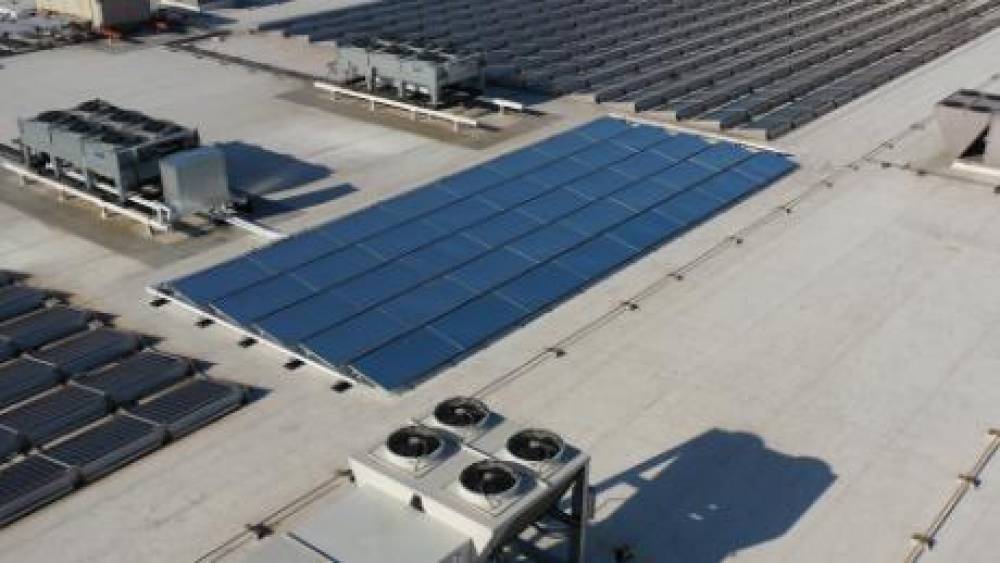
SkyCool Makes Use Of Technology And Nature To Help You Save Money On Your Air Conditioning Bill
SkyCool makes use of technology and nature to help you save money on your air conditioning bill
In some parts of the United States, heat waves are becoming more common — which means that more people are running their air conditioners for longer periods of time. However, those air conditioners can exacerbate the problem by emitting greenhouse gases that contribute significantly to climate change.
SkyCool Systems is attempting to break this vicious cycle by developing technology that will allow buildings to cool down in a manner similar to how the planet cools itself.
"Our planet naturally cools itself by radiating heat outward in the form of infrared light or radiation," explained Eli Goldstein, cofounder and CEO of SkyCool.
"We're essentially using that effect to radiate heat out and out throughout the day and night, even in direct sunlight."
The five-year-old company claims to accomplish this through the use of nanotechnology-based rooftop panels. These panels are made of an optical film that emits infrared light and then cools itself. They resemble solar panels but, according to the company, reflect 97 percent of the sunlight that strikes them, cooling the surface below.
SkyCool's model entails submerging those panels in a network of pipes. These pipes are filled with water that is cooled by the panels and then circulated through a refrigeration or air conditioning system. This procedure is intended to relieve pressure on the cooling mechanism of the system. Additionally, because the panels cool naturally and do not require external power to operate, they contribute to the overall system's energy efficiency.
Testimonies
A Grocery Outlet store in Stockton, California, which has been using SkyCool's system for about a year, reports seeing a significant reduction in its electrical bills.
"After we installed our SkyCool system, our electricity company increased our rates," the store's manager, Jesus Valenzuela, told CNN Business. "Our bill did not increase at all; in fact, it decreased slightly," he added. According to Valenzuela, the panels have saved his store approximately $3,000 per month.
For years, scientists have studied the benefits of radiative cooling, including Goldstein's co-founder and UCLA professor Aaswath Raman, a pioneer in the field. In recent months, several solutions and models for harnessing the process have been proposed.
However, there are some obstacles, including a constraint that is well-known in the solar industry: it does not work as well in the absence of sunlight.
"Our technology works best in hot, dry climates with a clear sky; when there are clouds, that radiative cooling window is blocked," Goldstein explained. "In the same way that [carbon dioxide] absorbs light and acts as a heat trap, water vapor absorbs infrared light as well."
However, perhaps the most significant impediment to widespread adoption is the technology's relatively high cost. The majority of radiative cooling solutions "are burdened by high manufacturing costs and production limitations," researchers at China's Fudan University wrote in a paper published earlier this year in the journal Nature.
Goldstein would not disclose the exact cost of SkyCool's panels but acknowledged that they are currently "expensive" in comparison to solar panels.
"New technologies, such as radiative cooling, are frequently more costly," he explained. "People are extremely price sensitive, which adds another barrier to getting new things out there."
A large part of that is due to low production volumes, he explained. Scaling up production, Goldstein said, could help bring costs down, particularly in developing countries in Asia and Africa, where SkyCool hopes to expand eventually. For the time being, the company is focusing on commercial applications of the technology, though it hopes to eventually begin installing panels on residential roofs. It has also installed panels in a retail store and a data center in California.
"We're just thrilled to be able to put this new technology to use for the greater good," Goldstein said.

